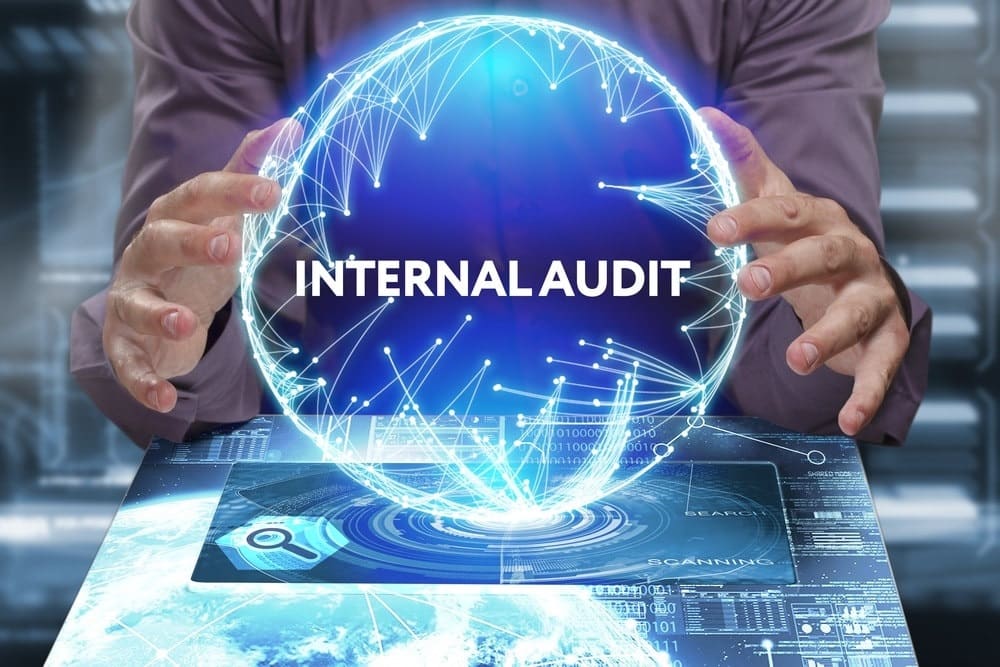With digitization fueling innovation and change, two questions arise: Is internal audit adjusting quickly enough to innovate and embrace underlying technologies, and should executive management and the board care? Protiviti’s Jim DeLoach discusses.
In a world of rapid change on almost every front, in which organizations must adapt and grow – or risk decline and ultimate demise – everybody faces the same reality: either raise the game to contribute sustainable value or be left at the station. These words could have been written a year or two ago. Today, the COVID-19 pandemic and the emergence of social unrest has left leaders and directors exhausted from the intensity of their efforts to align their organizations with evolving market realities.
The chief audit executive (CAE) also faces alignment challenges. As the risks and complexities organizations face change, so do the focus, skill sets and capabilities needed by internal audit.
This is a topic that has been discussed for several years. While there is certainly no one-size-fits-all approach to transforming internal audit, the notion of the function’s digital future is no longer a hypothetical. It is here now, and the tools and capabilities are not only available, but being deployed in creative ways by pioneering CAEs blazing the trail along the cutting edge.
In the digital age, internal audit must commit itself to elevate its value proposition, embrace change and improve continuously. This means innovating and transforming itself to an agile, multi-skilled and technology-enabled function – a so-called next-generation function.
Internal audit must be able to recognize emerging risks and changes to the organization’s risk profile quickly and efficiently enough to incorporate them in a timely manner into the audit plan so they can be addressed in the assurance the function delivers. To deliver stronger assurance and more valuable insights to the business efficiently, a next-generation function embraces a holistic approach focusing on competencies, qualities and components falling into three broad categories:
- Governance includes the strategic vision, organizational structure and resource management of the function itself.
- Methodology is the “how” of transformation or the body of methods, rules and procedures guiding the function’s operations from risk assessment to execution to reporting.
- Enabling technology includes relevant tools of the digital age – process mining, analytics, robotic process automation, machine learning and artificial intelligence (AI) – together with the data essential to fuel these technologies.
Traditional methodologies, long-trusted and embedded point solutions and conventional thinking simply can’t accomplish these tasks efficiently at the speed of change that is occurring. Many CAEs readily see that internal audit tools and techniques are evolving rapidly, creating ample energy and excitement around transformation possibilities and innovation within the function. In polling at various webinars and conference presentations conducted by Protiviti as well as in independent research[1] our firm has conducted, a strong majority of participants consistently indicate that they are undertaking some form of next-generation auditing initiatives.
What Does This Mean, and Why Should the Board Care?
Next-generation internal audit functions have three essential objectives: (1) improve assurance by increasing the focus on key risks, (2) make internal audit more efficient and (3) provide deeper, more valuable and more timely insights from audit activities and processes. These objectives are easy to understand. The mechanisms to implement such changes, however, vary across a range of innovative approaches, tools and governance processes and are intertwined with an innovative culture the CAE tailors to the organization’s needs and his or her vision of what next-generation internal audit looks like.
Our research indicates that three out of five functions are undertaking some form of innovation or transformation effort but that next-generation internal audit capabilities adoption remains in a relatively early stage. In many instances, implementation of the governance mechanisms, agile methodologies and enabling technology that comprise the next-generation internal audit model has so far occurred in an ad hoc manner. The message is clear for the significant number of functions that have yet to begin their next-generation journeys: It’s time to get started.[2]
Common Tech Activities and Tools Implemented in Next-Gen Transformations
- Ubiquitous data analyses and advanced analytics: These capabilities access a broad swath of data to develop a holistic view of risk and include analysis of full samples, data-driven flow charting and early-warning systems using predetermined risk thresholds. The use of big data, process automation and data analytics offers interactive visualizations and business intelligence capabilities and can play an important role in freeing up time for more strategic analysis and creation of impactful reports.
- Automated processes: Robotic process automation is a powerful means of eliminating manual-intensive tasks, allowing auditors to sharpen their focus on key business risks and areas requiring exercise of professional judgment. Examples include reviewing large volumes of contracts to identify high-risk terms or clauses requiring further review and advanced monitoring techniques to drive greater audit coverage, efficiencies and early alerts.
- Process–mining insights: Process-mining technology uses data earlier in the audit cycle to tell the story of how processes are actually performing. It enables auditors to analyze process data quickly to identify risk and potential control breakdowns and inefficiencies, as well as to direct audit focus to those issues and opportunities that truly matter, delivering significant efficiency gains and a more impactful audit process.
- AI and machine learning: This advanced capability increases the effectiveness and efficiency of complex testing and provides complex analysis in real time. Examples include classification and clustering algorithms designed to identify outlier or otherwise high-risk transactions and to better stratify populations for risk-based analysis; and predictive modeling to provide intelligent continuous process auditing.
These digital activities and tools enable internal auditors to translate an increasingly overwhelming amount of data into meaningful, impactful analysis. Coupled with divergent thinking, these capabilities have the potential to steepen the value-delivery curve significantly for internal auditors.
This is the digital pathway that leads to the observations and recommendations that board members, senior executives and other stakeholders will value and can act on quickly in a digital world. Rarely will an audit plan be executed in its entirety before fresh insights and developments emerge, creating the need for changes to it. The static annual planning process so familiar to executives and directors has become a relic of the past.
In summary, senior management and boards of directors cannot be indifferent to the CAE’s level of awareness of digital techniques and tools that are the imperatives of next-generation audit. As companies move to cloud computing and adopt AI and machine-learning concepts, an agile audit methodology enabled with the right skills, resources and technology helps the CAE sustain internal audit’s relevance by providing assurance to executive management, the board and other stakeholders on the risks that matter in the most efficient manner. In the digital age, CAEs need to rethink how their functions plan, execute and deliver results with an objective of increasing and sustaining the value contributed to the companies they serve. Senior management and the board should accept nothing less.
Questions for Executive Management and Boards
The organization’s leaders and their boards may want to consider the following questions in the context of the nature of the entity’s risks inherent in its operations:
- Are we satisfied with the scope of internal audit’s activities in view of changes in the business environment and the company’s operations? Are we getting the assurances we need from internal audit in the appropriate areas?
- Does internal audit have the tools it needs to address the priorities and achieve the coverage set forth in the audit plan? Has internal audit adopted a next-generation strategy that is aligned with the company’s risk profile and stakeholder expectations? For example, does the CAE consider deployment of the data and technology-enabled processes and capabilities that would facilitate delivery of cost-effective assurance? Does the board support the CAE’s transformation efforts in its oversight?
[1] 2020 Internal Audit Needs and Capabilities Survey: Exploring the Next Generation of Internal Auditing, Protiviti, August 2020, available www.protiviti.com/IAsurvey.
[2] Ibid.



 Jim DeLoach, a founding
Jim DeLoach, a founding 






